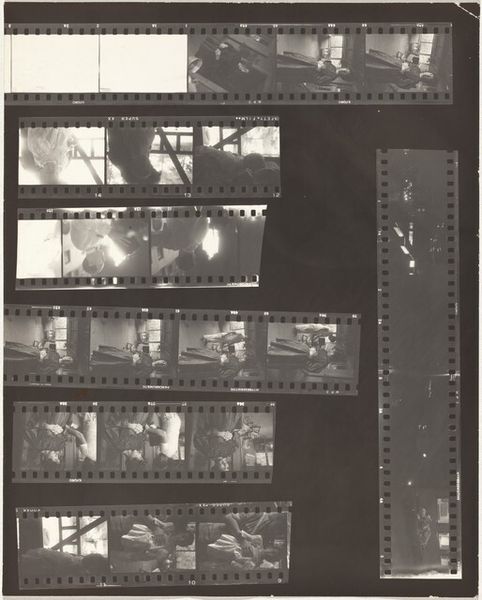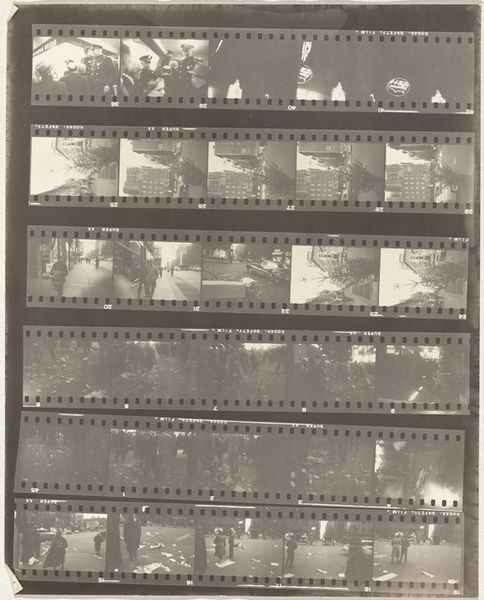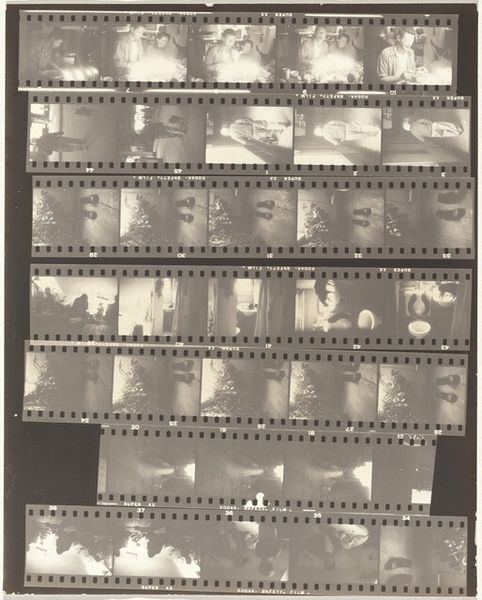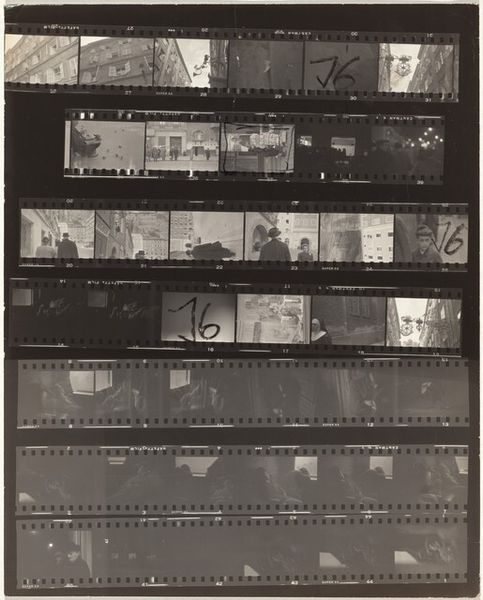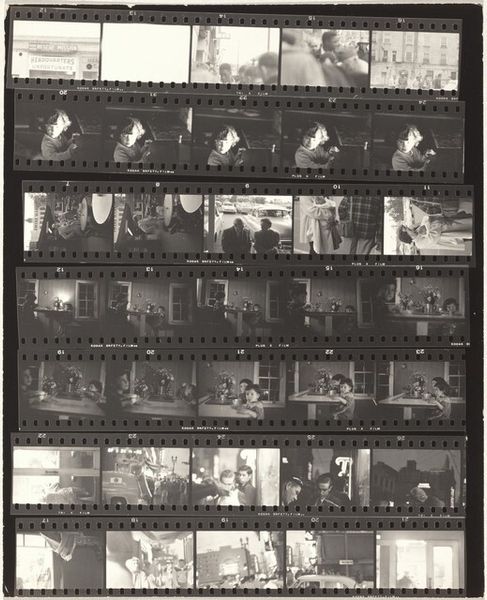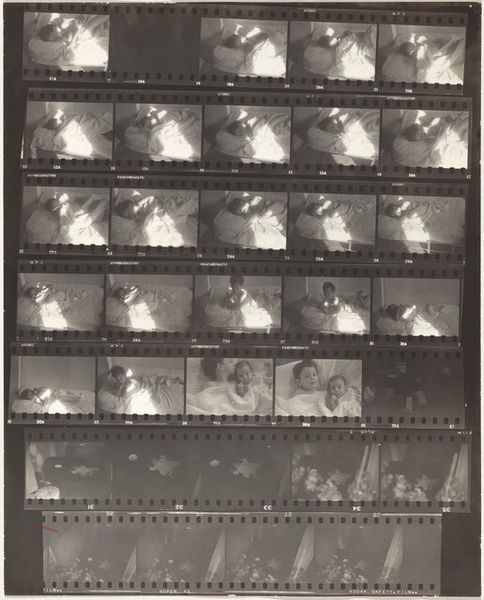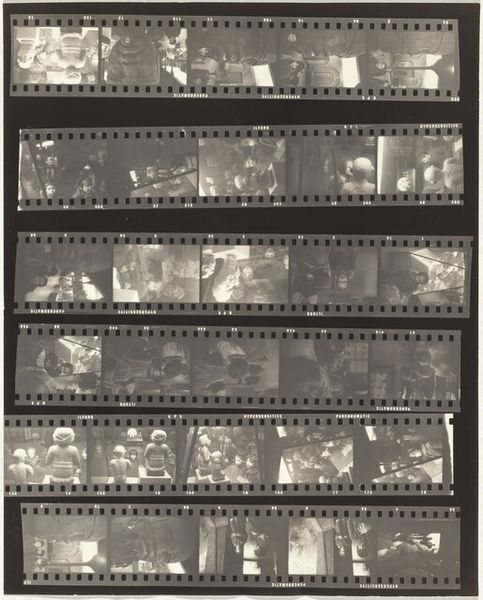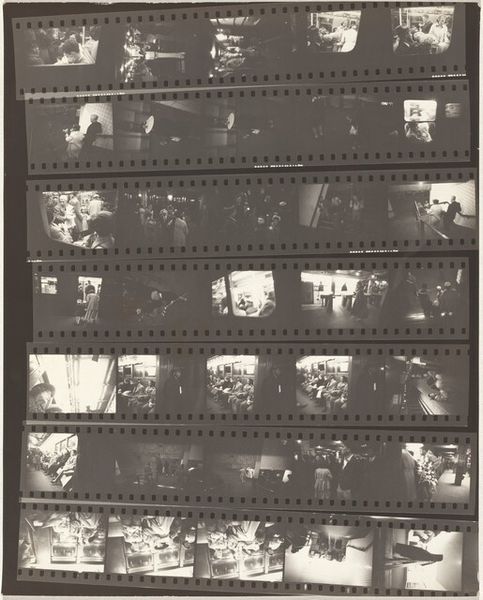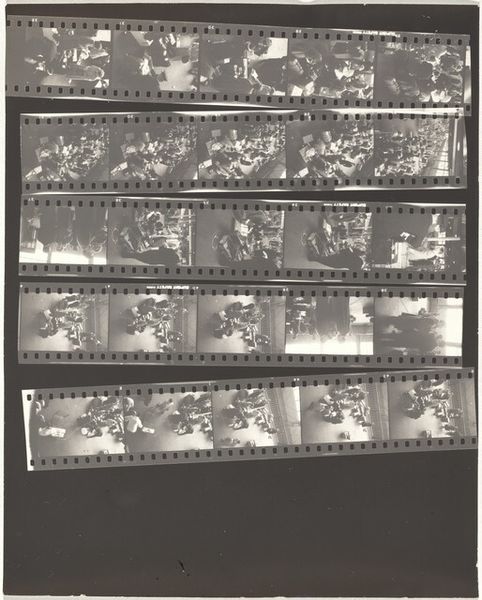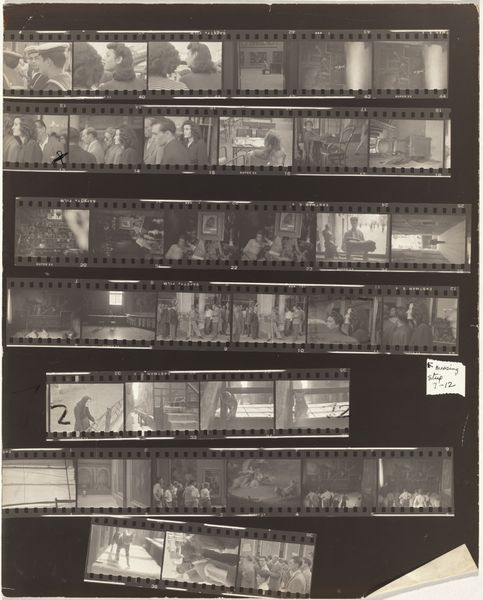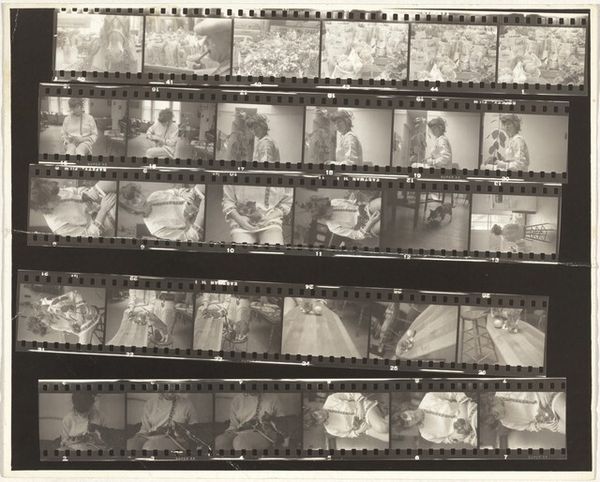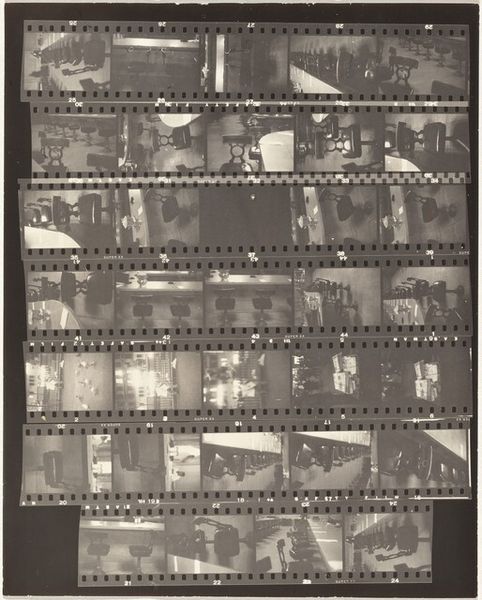
Dimensions: sheet: 25.2 x 20.2 cm (9 15/16 x 7 15/16 in.)
Copyright: National Gallery of Art: CC0 1.0
Curator: This is a gelatin silver print contact sheet by Robert Frank, titled “Mary, Halloween–Parties no number,” circa 1957. Editor: It's a dizzying array of images. I’m struck by the grittiness; it’s a raw, almost intrusive look at what seems like mundane moments. Curator: Well, Frank’s material processes contribute to that feeling. He wasn’t interested in perfect clarity. He cropped and printed these in a way that really highlights the texture and grain of the film itself, challenging notions of traditional photographic beauty. Editor: I can see that. It reflects a particular cultural mood of the 1950s. Halloween celebrations as these post-war expressions, a culture simultaneously embracing consumerism and wrestling with anxieties around social change. I'm interested in the settings as well; parties and the streets where the images become documentation of urban social life. Curator: Exactly, and let's remember that photography in this era was becoming increasingly accessible. These contact sheets are artifacts of mass production; Frank captures ordinary subjects in places meant for the everyday people that engaged in such activities. The industrial element of the camera, the silver halide crystals reacting to light; all these become important aspects of understanding this image. Editor: These images challenge this "perfect family portrait", which reflects societal changes in how celebrations or even portraits were viewed. These photos seem to focus on the process more so than on who is there in it. Curator: Absolutely. His rejection of commercial practices creates a unique visual language that connects him to the everyday. The images remind us to not always trust a photographic portrait, as the raw look and material imperfections disrupt a perfect image. Editor: Reflecting on this photograph, it feels like looking into a past that's both familiar and alien. The parties feel staged by their spontaneity. Curator: And it's this ability to intertwine production with meaning that secures Frank's place in the photographic canon, which, I believe, becomes visible because of the format in which they are held. Editor: Indeed, this glimpse into a contact sheet shows that, beyond social commentary, lies the true, tangible heart of how an artist challenges photography and society.
Comments
No comments
Be the first to comment and join the conversation on the ultimate creative platform.
